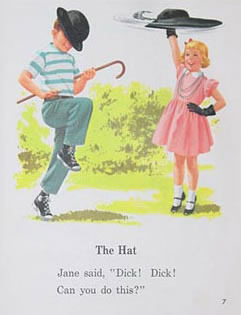Writing Tip #10: Go Vertical
 Grow from writing "Dick & Jane" style sentences, created for early readers and be a complex story teller. Do this by going vertical.
Grow from writing "Dick & Jane" style sentences, created for early readers and be a complex story teller. Do this by going vertical.To "go vertical" means go deep and to also go high. You are invited to infuse aspects of your story with detail which could range from sensory (taste, touch, smell, hearing, sight) to observational.
EXAMPLE:
You could write: The little boy pulled a wagon down the street. The wagon was full of sticks.
Or you could go vertical and write: Henry, four years old and not more than three feet tall, used two hands to tug his one Radio Flyer—candy apple red—down Skidmore Street. A pile of twigs, perhaps thirty in all, were stacked Lincoln Log style in a crisscross pattern that was stable but also unstable evidenced by the way the pile teetered right to left and left to right. Henry sported a pair of khaki shorts, the kind with so many pockets upon pockets upon pockets—big, small, deep, shallow—and each of these pockets bulged heavy with secreted chestnuts, feathers, rocks and bits of rubber collected from the road. Only the twigs, on display for all to see, were evidence of his obsessive collecting habit.
The first sentence is easier to write, and certainly faster, but it is also flat language. Memorable stories are built on the images we create with our word choices and when we unpack our sentences, we dip down into the deep well of description.
A simple way to think of this tip is that every time a significant noun (ie: a person such as Henry or a thing like the twigs or his wagon) presents itself in your story, stop and consider adding at least three levels of detail/description that can actually draw the noun into an image that another can see in their own mind. (IE: A pile of twigs, (1) perhaps thirty in all, (2) were stacked Lincoln Log style in a (3) crisscross pattern that was (4) stable but also unstable evidenced by the way (5) the pile teetered right to left and left to right. In this example, I use five additional details to describe the twigs).
Going vertical is also an opportunity for the writer to enter the story via their own memory or interpretation of what they are describing. This phenomenon is beautifully described in Tell it Slant by Brenda Miller, where she writes (pg. 30) about people who write about nature and then pushes on to talk about how important it is to go beyond just weighty description and infuse work with "human consciousness." IE: "While fine description is dandy, it tends to wear thin after a while. Even if your prose about the soft rosy beauty of the alpenglow is first rate, if you don't move beyond that, readers are likely to want to put down your writing and go see for themselves. What holds readers...is the sense of a human consciousness moving through...."
….(let's pick up with the Henry tale)….
As I watched the little boy from my front window, I thought of myself so long ago. Had I ever been that young? Had I ever been that small? Had I ever been that strong? What had happened to the boy in me who collected everything—pennies, bugs, dried leaves. My goodness, I even collected moss from trees and bits of shells from our trips to the sea when even a small fragment of a sand dollar or a conch seemed as rare and as valuable as silver and gold.
Going vertical mean, quite literally, to be perpendicular to the surface. The vertical line goes up and down verses side to side. When you go vertical, there is the opportunity to expand your writing to add dimension and perspective.
NOW YOU TRY THIS:
PROMPT. Go outside and sit still for a bit. Look around. Look up, down, right, left and so on. Feel the wind, the cool, the sun. Listen to the birds, the traffic and the dog that barks across the street. Be for a while.
Now write, 20 minutes at the most and try to infuse your writing with both details and your own consciousness. Submit here, in the comment section and I'll make some suggestions and give feedback! Good luck.
Published on October 31, 2011 01:40
No comments have been added yet.



